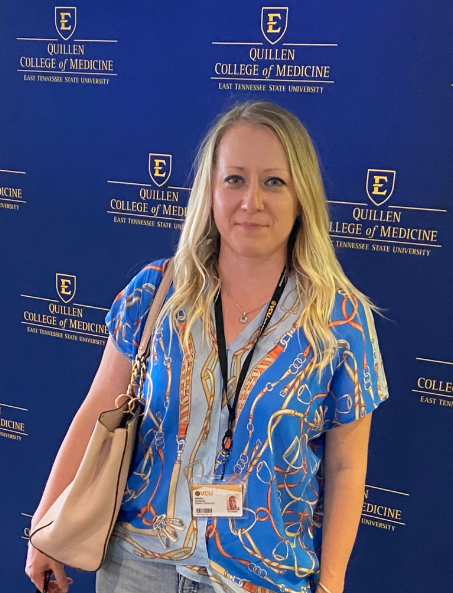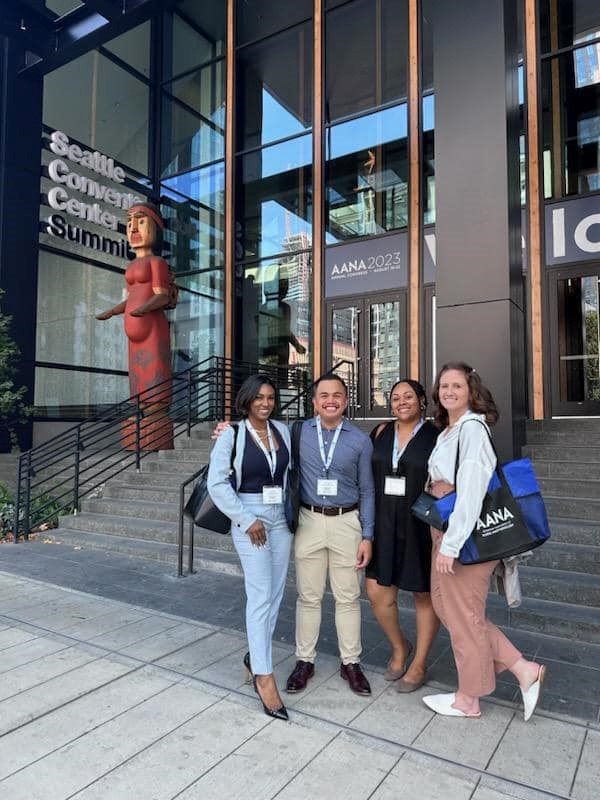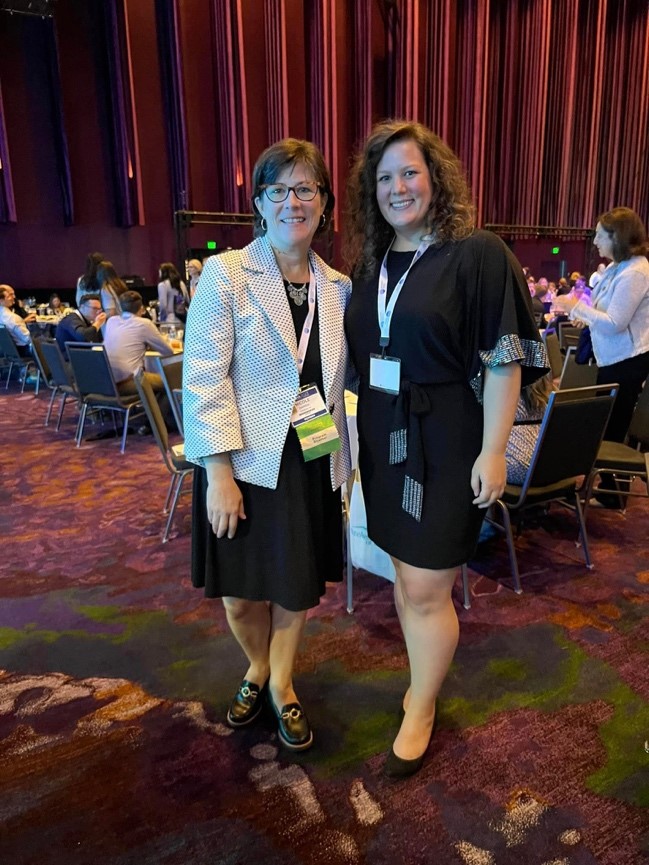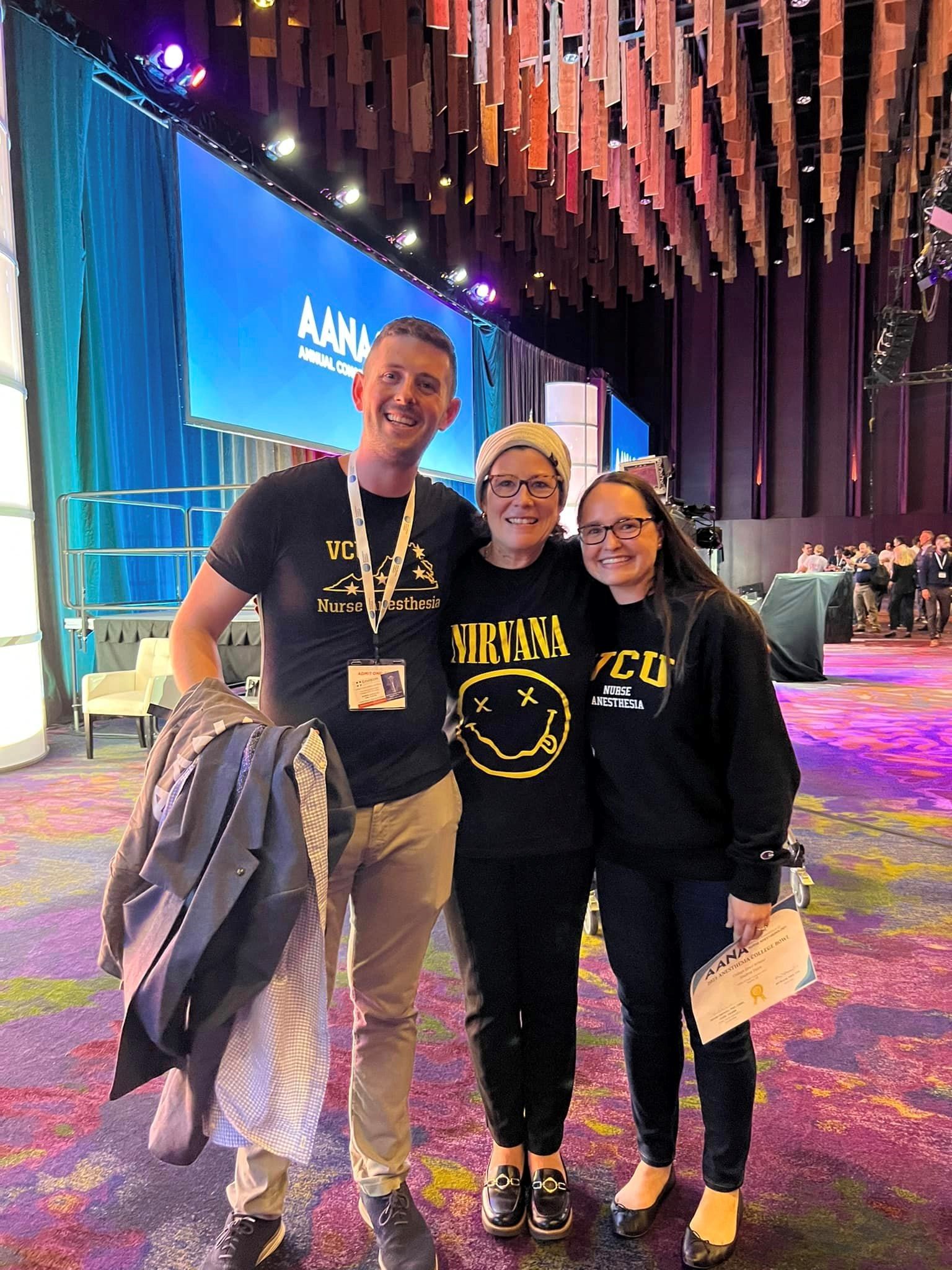Student Reflections on Scholarly Activities
 During a routine induction with propofol, a patient developed a masseter spasm, an unusual propofol-related complication. I became interested in researching this topic and was compelled to share what I've learned with other students who may have witnessed a seizure-like activity following propofol administration but did not know how to explain it. This event became a foundation for the International Student Journal of Nurse Anesthesia publication (ISJNA).
During a routine induction with propofol, a patient developed a masseter spasm, an unusual propofol-related complication. I became interested in researching this topic and was compelled to share what I've learned with other students who may have witnessed a seizure-like activity following propofol administration but did not know how to explain it. This event became a foundation for the International Student Journal of Nurse Anesthesia publication (ISJNA).
ISJNA is produced exclusively for publishing the work of nurse anesthesia students. The goal is to introduce the student to the world of writing for publication. Since this was my first publishing work, the ISJNA was a perfect starting point in my writing journey. Case reports, research abstracts, evidence-based practice projects, and letters to the editor are accepted for publication.
The process of writing and publishing is straightforward. The guidelines are well-explained and easy to follow. Mentors take an active role in reviewing the work for content, style, and format. Although the journal recommends submitting the work within 4-6 months before graduation, I recommend submitting it early because the final review can take up to 11 months to complete.
 My recent attendance at the AANA congress in Seattle was truly a remarkable experience. The sense of collegiality and the vibrant energy that permeated the event left a lasting impression on me. Meeting CRNAs from different parts of the country and engaging in insightful discussions about their diverse practices and the evolving nuances in our field was invaluable.
My recent attendance at the AANA congress in Seattle was truly a remarkable experience. The sense of collegiality and the vibrant energy that permeated the event left a lasting impression on me. Meeting CRNAs from different parts of the country and engaging in insightful discussions about their diverse practices and the evolving nuances in our field was invaluable.
One highlight of the congress was the presentation by Maria S. Poepsel on the advantages of Machine Learning algorithms for intraoperative predictive analytics. It underscored the increasing importance of technology and data-driven approaches in our profession. Exploring the exhibition hall was equally eye-opening, with glimpses of cutting-edge anesthesia machines incorporating AI technology, foreshadowing the exciting changes in our practice.
But beyond the knowledge gained, what I treasure most are the connections forged with fellow students and CRNAs. These new friendships and professional relationships are the building blocks of a stronger anesthesia community, and I'm grateful for the opportunity to be a part of it. The AANA congress was a transformative experience that has further fueled my passion for advancing our profession.
 As Mount Rainier towered above the clouds against the pink and orange hues of a Pacific Northwest sunset, I knew I was in for an incredible experience when we arrived to Seattle-Tacoma airport. The opportunity to travel to the American Association of Nurse Anesthesiology’s Annual Congress offered time to meet leaders in the profession, hear some of the amazing work and research CRNAs are doing to advance the profession, and discuss the latest trends affecting our field.
As Mount Rainier towered above the clouds against the pink and orange hues of a Pacific Northwest sunset, I knew I was in for an incredible experience when we arrived to Seattle-Tacoma airport. The opportunity to travel to the American Association of Nurse Anesthesiology’s Annual Congress offered time to meet leaders in the profession, hear some of the amazing work and research CRNAs are doing to advance the profession, and discuss the latest trends affecting our field.
Dr. Heiner’s breakout session covered crisis management, specifically the emergency surgical airway. His presentation included personal experiences and highlighted the gravity of the decision to establish a surgical airway, but also the dire consequences associated with the inability to make the decision when there is a clinical indication to intervene. He offered stepwise instructions, complete with a demonstration of the scalpel, finger, bougie technique on his own tracheal model (secured to his own neck, no less!).
The College Bowl had no shortage of entertainment mixed with SEE and board preparation. Everyone showed up in spirit garb, blow horns, pom-poms, and plenty of energy to cheer on their CRNA programs. Two of my classmates represented Virginia Commonwealth University and did a fantastic job, with their teams ending up in first and second place overall!
I was fortunate enough to have been selected as an AANA Foundation scholarship recipient, which would not have been possible without the support of my VCU faculty and recommenders. During the student luncheon, I met other Nurse Anesthesia Residents from across the country and shared stories of school and clinical experiences. I look forward to seeing them again once we are all CRNAs!
Seattle offered so much to do in our down time! The VCU Nurse Anesthesia program explored Pike Place Market, ate delicious sushi at Japonessa, and attended sponsored recruiting events at local rooftop venues. It was great to spend time with my colleagues, see local sights, and hear about all the opportunities waiting for us after graduation. Luckily, I had a dear friend from my travel nurse days who was local to the Seattle area! We went to Kerry Park to see the city skyline, hit Gasworks Park, the Space Needle, and enjoyed beautiful alpine mountain views when we hiked Snow Lake!
I highly recommend attending AANA Annual Congress as a Nurse Anesthesia Resident. It offers a chance to see a new part of the country, to connect with other Nurse Anesthesia Residents, to learn from expert faculty from other institutions, and to have a lot of fun with your fellow classmates!
 This past August, I had the opportunity to attend the American Association of Nurse Anesthesiologists (AANA) annual congress in Seattle, WA. Our professors Dr. Carmel, Dr. Hu, and Dr. O’Guin did an excellent job presenting their research and positively representing the VCU DNAP program. One of the highlights of the conference was the optional Difficult Airway Skills Lab.
This past August, I had the opportunity to attend the American Association of Nurse Anesthesiologists (AANA) annual congress in Seattle, WA. Our professors Dr. Carmel, Dr. Hu, and Dr. O’Guin did an excellent job presenting their research and positively representing the VCU DNAP program. One of the highlights of the conference was the optional Difficult Airway Skills Lab.
During this hands-on lab, SRNAs and CRNAs had a unique opportunity to perform a surgical cricothyrotomy on a cadaveric porcine larynx with a trachea. Students learned how easy it can be to accidentally create a false passage. I felt grateful to learn this on the cadaveric porcine larynx and strengthen my skills before graduation.
As graduation approaches, I find myself pondering: How will I keep up my difficult airway skills as a CRNA? When I was in rotation at a military hospital during clinical rotations, I learned of their simulation center and the frequent simulation opportunities that were offered to prime providers in quickly taking action during emergent events. I wondered if something similar was offered in Richmond. I recently learned that as VCU Alumni we have free access to the VCU DNAP simulation lab with equipment after graduation. There are also anesthesia crisis resource management (ACRM) experiences for CRNAs hosted by VCU Nurse Anesthesiology Faculty Associates (NAFA) that we may attend for additional training.